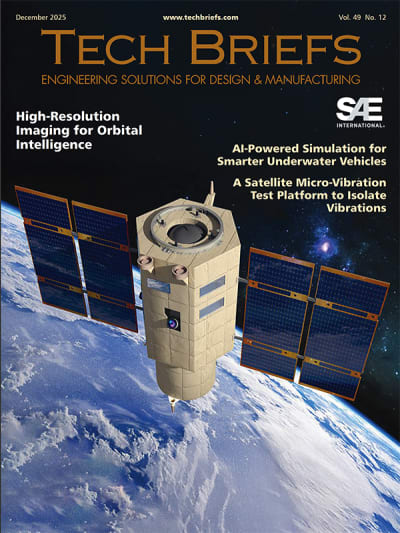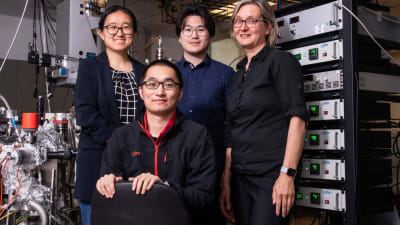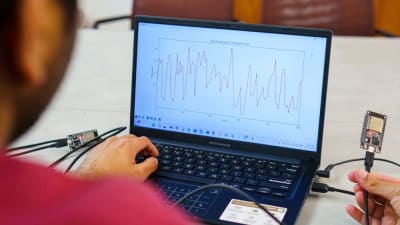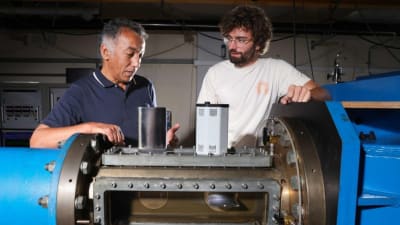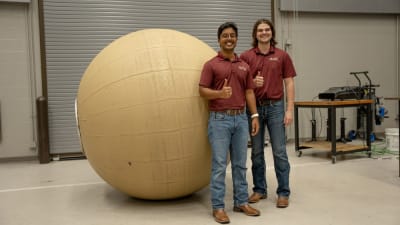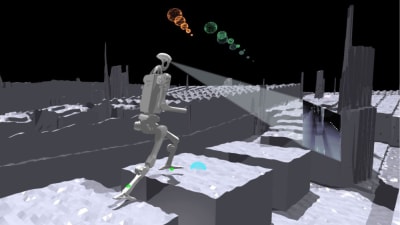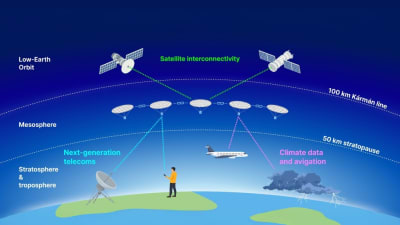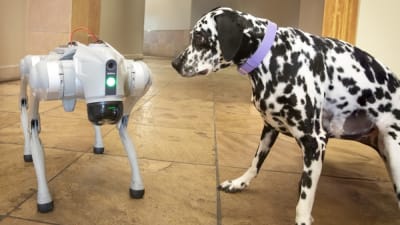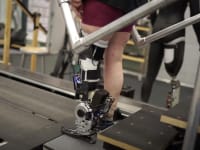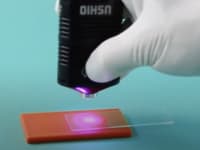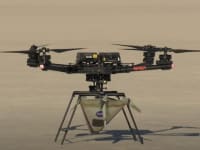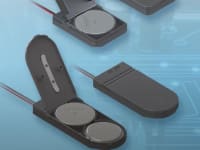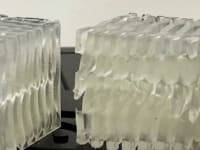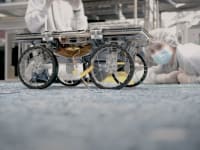61
12,105,170,194,926
-1
60
30
Technology Report: Energy
As EV battery designs continue to explore new pack shapes, Freudenberg Sealing Technologies has developed a new, flexible busbar sealing technology that enables...
INSIDER: Research Lab
Transistors, the building blocks of modern electronics, are typically made of silicon. Because it’s a semiconductor, this material can control the flow of electricity in a...
INSIDER: Design
A research team led by physicists Ming Yi and Emilia Morosan from Rice University has developed a new material with unique electronic properties that could enable more powerful and...
INSIDER: Electronics & Computers
Researchers from MIT and elsewhere have designed a novel transmitter chip that significantly improves the energy efficiency of wireless communications, which could boost the...
INSIDER: Sensors/Data Acquisition
Traditionally, measuring heart rate requires some sort of wearable device, whether that be a smart watch or hospital-grade machinery. But new research from engineers at the...
News: Medical
SAE Media Group announced the winners of its Rising Star Awards: Women in Engineering program today during a live online event attended by participants across the globe.
Blog: Manufacturing & Prototyping
An EPFL Ph.D. student has developed a 3D-printable clever device that significantly dampens the flow-induced vibration caused by rotating parts.
Blog: Robotics, Automation & Control
Two decades after the original idea, RoboBall is rolling across Texas A&M University. The RAD Lab is intent on sending the novel spherical robot into uncharted terrain.
Quiz: Transportation
How much do you know about the safety innovations that keep EVs (and us) safe? Find out with this quiz.
INSIDER: AR/AI
Training humanoid robots to hike could accelerate development of embodied AI for tasks like autonomous search and rescue, ecological monitoring in unexplored places and...
INSIDER: Nanotechnology
Between 50 and 100 kilometers (30-60 miles) above Earth’s surface lies a largely unstudied stretch of the atmosphere, called the mesosphere. It’s too high for airplanes and weather balloons,...
INSIDER: Design
A new study explains how tiny water bugs use fan-like propellers to zip across streams at speeds up to 120 body lengths per second. The researchers then created...
INSIDER: Design
Northwestern University engineers have developed a soft artificial muscle, paving the way for untethered animal- and human-scale robots. The new muscles, or actuators, provide the...
INSIDER: Electronics & Computers
The Silicon Technology for Applications Relying on Light with Photonics Devices (STARLight) project brings together a consortium of leading industrial and...
Blog: Design
Researchers at Sandia National Laboratories have developed brain-inspired AI algorithms that detect physical problems, cyberattacks, and both at the same time within the grid.
Blog: Energy
Everybody’s talking about the problem of providing the electricity to power the growth of AI, but are we doing enough solve it?
Blog: Imaging
While the average pampered pup at home may lounge on the couch and demand belly rubs, the robotic dogs being created at Arizona State University are stepping up to take on some of the world’s most dangerous tasks.
INSIDER: Electronics & Computers
Researchers at Oak Ridge National Laboratory are breaking technical barriers with faster circuit breakers to enable and protect the modern electric grid. They developed...
INSIDER: Materials
In the quest for energy independence, researchers have studied solar thermoelectric generators (STEGs) as a promising source of solar electricity generation. Unlike the...
INSIDER: Manufacturing & Prototyping
Global energy demands are surging, pushed by energy-intensive data centers powering artificial intelligence and increased manufacturing. How will the world meet these...
INSIDER: Electronics & Computers
Supercapacitors are siblings of batteries. Both technologies store electrical energy. Batteries have a high energy density but a low power density. In other words, they can store a lot...
Quiz: Energy
Wind turbines are imperative in our search for renewable energy as we aim to reduce our reliance on fossil fuels. How much do you know about wind turbines? Find out with this quiz.
News: Medical
Kennesaw State University’s Lei Shi is leading a research project that could alter how GI disorders are diagnosed and treated using virtual replicas of a human stomach.
Quiz: Imaging
Television was king during the second half of the 20th century — what do you know about the history of the technology?
Blog: Medical
A new AI model is much better than doctors at identifying patients likely to experience cardiac arrest. The linchpin is the system's ability to analyze long-underused heart imaging, alongside a full spectrum of medical records, to reveal previously hidden information about a patient's heart health.
Blog: Manufacturing & Prototyping
Haozhe “Harry” Wang, assistant professor of electrical and computer engineering (ECE) at Duke University and an expert in developing new methods for manufacturing materials, continues to push the boundaries in MXene research.
INSIDER: Robotics, Automation & Control
As waiting rooms fill up, doctors get increasingly burnt out, and surgeries take longer to schedule and more get cancelled, humanoid surgical robots offer a solution. That’s the argument that UC San...
INSIDER: Robotics, Automation & Control
Researchers at North Carolina State University have unveiled Rainbow, a first-of-its-kind multi-robot self-driving laboratory that autonomously discovers high-performance quantum dots...
INSIDER: Robotics, Automation & Control
The slimy, segmented, bottom-dwelling California blackworm is about as unappealing as it gets — but get a few dozen or a thousand together, and they form a massive, entangled blob that seems to take on a life of its own.
Top Stories
Blog: Manufacturing & Prototyping
2025 Holiday Gift Guide for Engineers: Tech, Tools, and Gadgets
INSIDER: Energy
Scientists Create Superconducting Semiconductor Material
Blog: Software
Blog: Materials
This Paint Can Cool Buildings Without Energy Input
Quiz: Automotive
Blog: Semiconductors & ICs
Webcasts
 Upcoming Webinars: Manufacturing & Prototyping
Upcoming Webinars: Manufacturing & Prototyping
The Real Impact of AR and AI in the Industrial Equipment Industry
 Upcoming Webinars: Motion Control
Upcoming Webinars: Motion Control
Next-Generation Linear and Rotary Stages: When Ultra Precision...
 Upcoming Webinars: Transportation
Upcoming Webinars: Transportation
Hydrogen Engines Are Heating Up for Heavy Duty
 Podcasts: Medical
Podcasts: Medical
How Wearables Are Enhancing Smart Drug Delivery
 Podcasts: Automotive
Podcasts: Automotive
SAE Automotive Podcast: Solid-State Batteries
